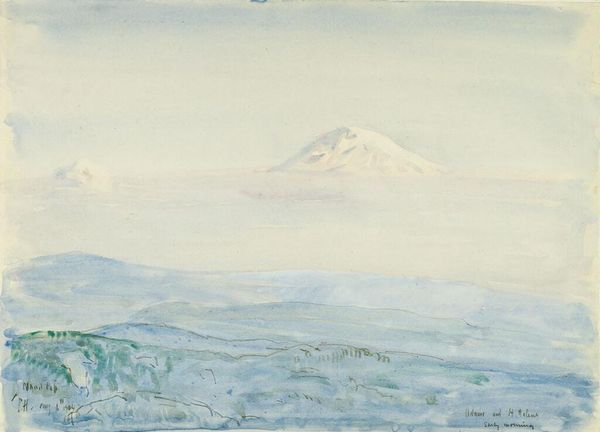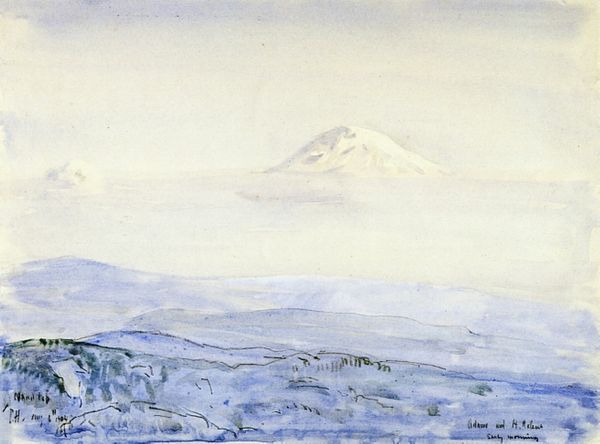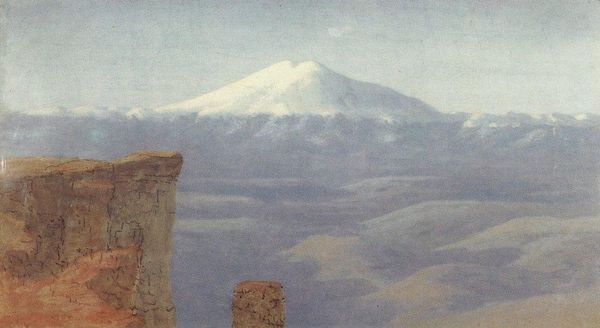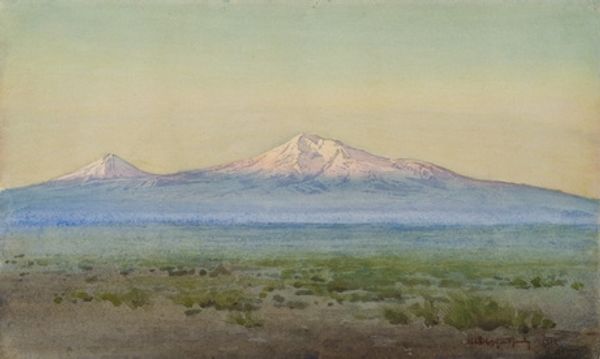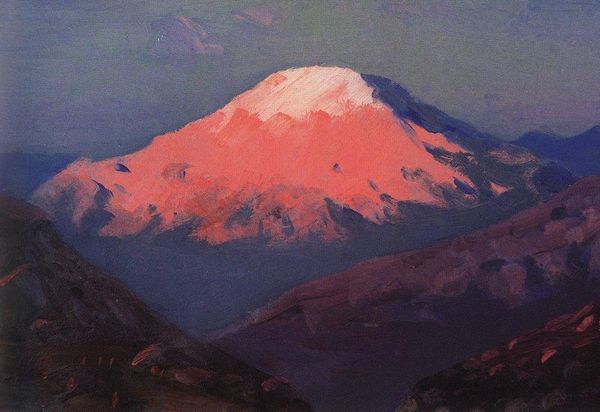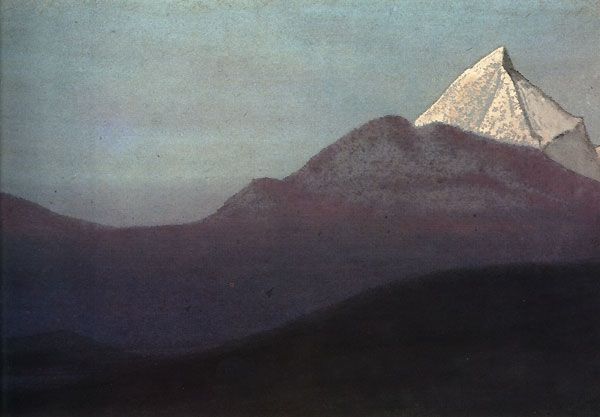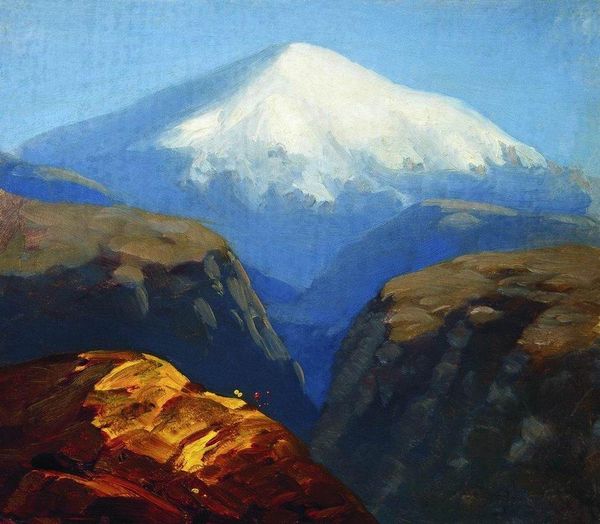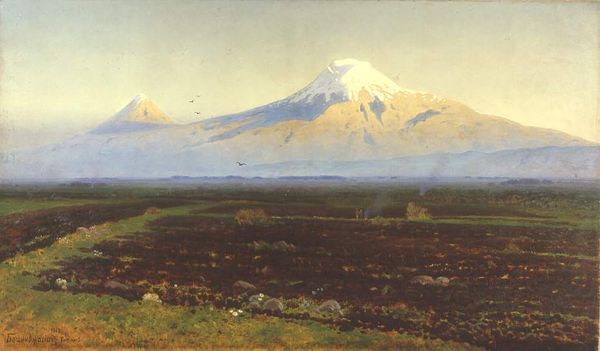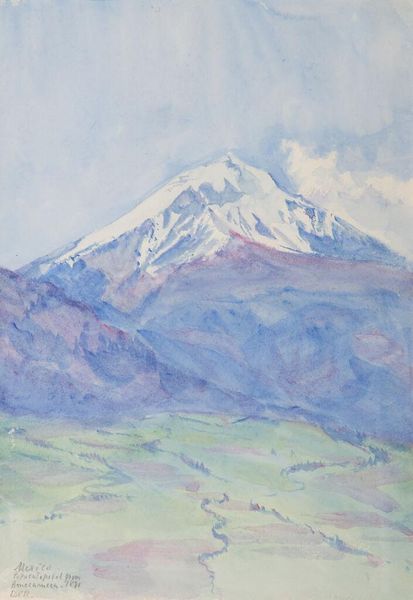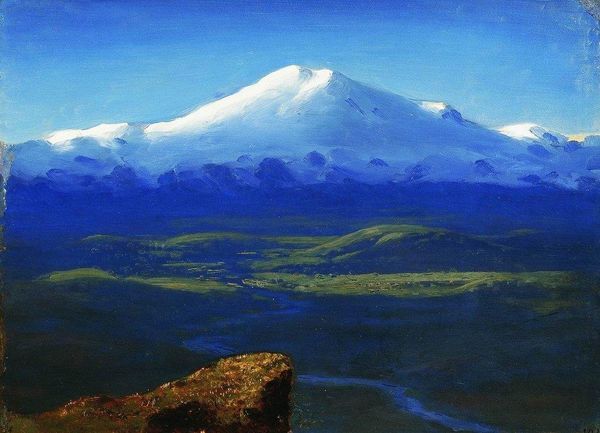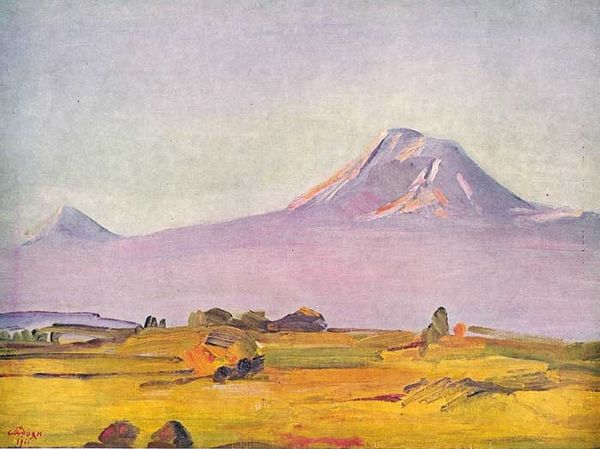
Copyright: Public domain
Arkhyp Kuindzhi captured Elbrus in this painting, likely in the late 19th century, with oils that seem to glow with an inner light. The mountain, a massive, silent deity clad in white, looms over a landscape washed in warm earth tones. The mountain as a symbol is hardly new. Think back to Mount Olympus of the Greeks or Mount Sinai, sites of divine revelation. We see this motif repeatedly, the mountain as a place where earth meets sky, where mortals can glimpse the sacred. In Renaissance art, mountains often appear in the backgrounds of religious scenes, quietly elevating the narrative. Here, Elbrus is not just a geographical feature, but an emotional anchor. It rises, austere and indifferent, evoking feelings of awe, humility, and perhaps a touch of existential solitude. This visual language taps into our collective consciousness. The mountain persists through history, a testament to our enduring fascination with the sublime. It continues to echo through art history, and even in our dreams, a silent witness to our fleeting existence.
Comments
No comments
Be the first to comment and join the conversation on the ultimate creative platform.
